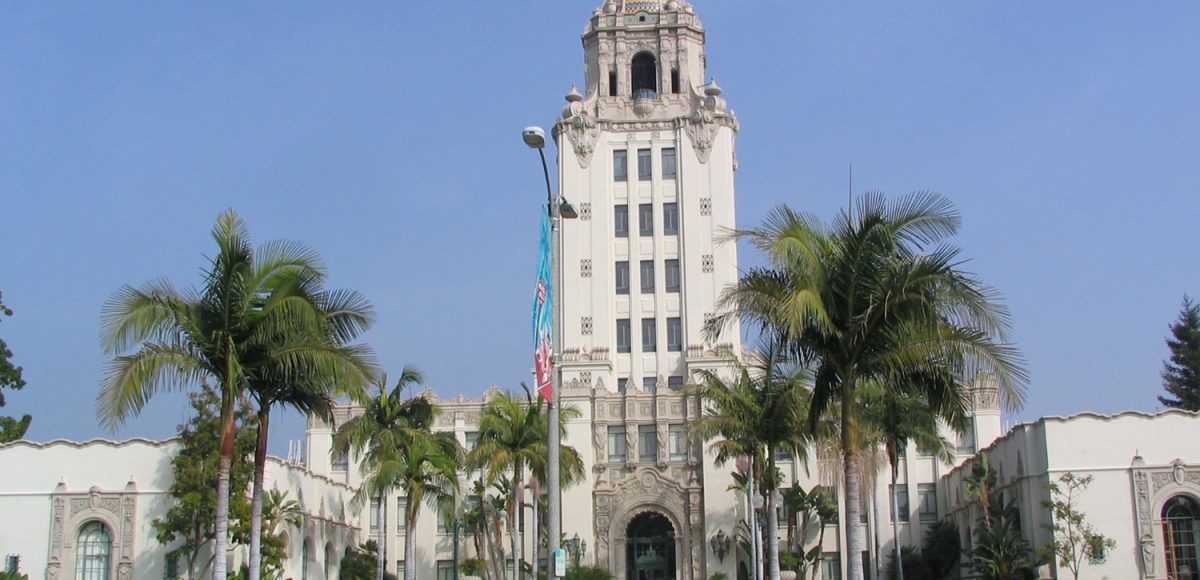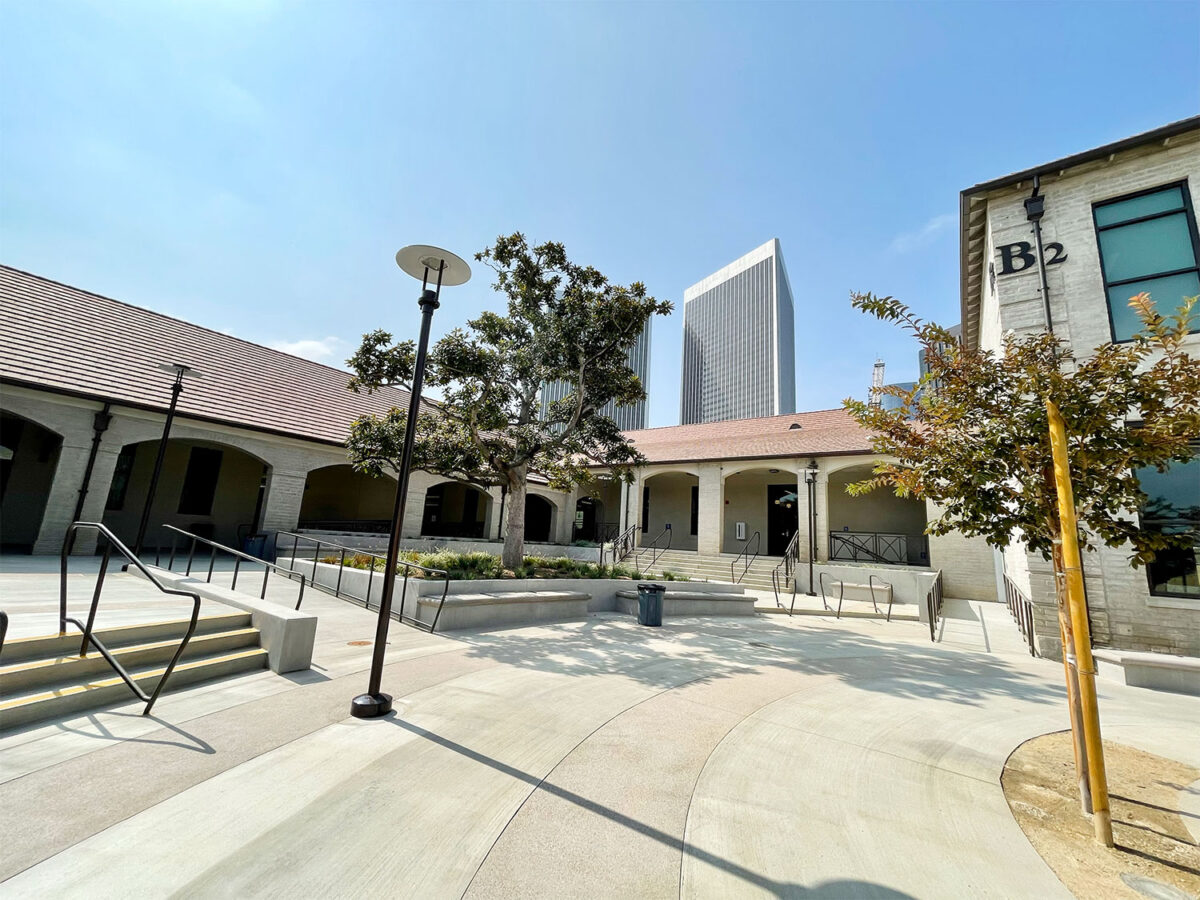The Beverly Hills City Council unanimously voted to approve a rent subsidy program for tenants impacted by COVID-19 at the Sept. 15 Regular Meeting. Councilmembers spent well over an hour crafting the final details of a $715,000 program that will directly pay landlords in an effort to stave off a potential wave of evictions stemming from the economic ripples of the pandemic. The Council engaged in lengthy discussions over the limiting criteria for tenants and landlords, including total tenant assets and the size of the landlord’s property holdings. Although unmentioned in the meeting, the discussion took place against the backdrop of a raging epidemic of homelessness throughout Los Angeles and concerns of how COVID-19 could feed into that crisis.
The program will apply to tenants living on multi-family properties that fall under the Rent Stabilization Ordinance, prioritizing seniors and households with children enrolled in Beverly Hills Unified School District. The program offers eligible residents up to $1,000 for three months to make up the remaining balance of unpaid rent. The money will go directly to the landlord under the condition that the landlord grant the tenant a year to repay back rent. Landlords will also have to agree not to evict tenants for a year.
The Council set the income threshold for qualified tenants at 80 percent of the Area Median Income (AMI), a commonly used figure for determining the low-income status of residents in an area. In 2020, the Department of Housing and Urban Development calculated the yearly AMI for a low-income family of four in Los Angeles as roughly $90,100
Depending on the amount of interest that the program receives, Councilmembers expressed an openness to expanding the criteria to 50 percent AMI. Director of Community Development Helen Morales, who authored the staff report, said that given the economic situation of the current applicants, it seems likely that the program can shoulder a lower threshold. Of the 197 applications filed to the City, only 24 percent are paying no rent at all. The majority, said Morales, are paying at least 50 percent of their rent.
“That is a good indicator that we can still help more people,” she told the Council.
Morales said she expects the number of applicants to increase as the pandemic persists far longer than many initially prepared for.
As of the Sept. 15 meeting, City staff had identified $442,935 in funds for the program, with another $272,000 likely available within the next several months. Across the board, the members of the Council wanted the number to rise even higher, to $1 million or more. The City Council has “expressed a desire to provide a rent subsidy dedicated to helping people in need on a going forward basis, beyond COVID-19,” according to the staff report.
The Council debated the merits of setting an asset limitation requirement for the subsidy, with the Council agreeing that applicants would have to specify different types of income.
“It’s not so much the assets,” Councilmember Dr. Julian Gold clarified, “it’s the amount of income the assets generate on a monthly basis.”
Councilmember Robert Wunderlich pushed back against the proposed cap on landlords with more than four units.
“Are we really going to fault the tenant because the tenant happens to live in a place that’s owned by a larger landlord?” he asked. “That might be excluding some of the tenants that are in the most need.”
According to Morales, the majority of landlords within the City own between five to 10 units.
Councilmember Lili Bosse proposed, and the other members ratified, a compromise of raising the cap to landlords with more than 10 units on a single property.
The program will be administered by Jewish Family Services, a non-profit that offers a range of services throughout L.A. The Council balked at the proposed price tag of $98,527 and instructed staff to renegotiate the administrative fee with the non-profit.
The vote places Beverly Hills in league with neighbors like Los Angeles, Santa Monica, and West Hollywood, and with Los Angeles County itself, all of whom have designed rent subsidy programs of their own. West Hollywood’s rental assistance program offers eligible tenants up to three payments of up to $1,000 for their rent. The City has received 1,047 applications, approving 801, at a total cost of nearly $700,000, according to the staff report. In contrast, Santa Monica offers a substantially higher maximum subsidy of $5,000 for up to 3 months, but only expects to assist 300 households. The price tag for the beachside city’s program comes in at $1.5 million.
Los Angeles County enacted its Rent Relief program on August 17, allocating $100 million of money it received from the federal Coronavirus Aid, Relief, and Economic Security (CARES) Act. The program is designed to assist around 8,000 households which are selected through a lottery, provided that they are eligible to apply. The County’s program targets residents from considerably more disadvantaged situations, providing up to $10,000 to households making 30 percent AMI and up to $7,500 for those making up to 50 percent AMI.
Residents of Beverly Hills qualify for the County’s program, but those who receive County assistance will not be ineligible for the City’s program.
While attention on the pandemic has waxed and waned in accordance with news cycles–with stories about the election, protests, and civil unrest–public policy experts have been blaring a foghorn of warning about an impending wave of evictions. Currently, California renters enjoy modest protection from evictions, but those protections do not address the economic realities underlying nonpayment of rent.
UCLA Law Professor Emeritus Gary Blasi in a report published May 28. “Without intelligent planning and immediate action, Los Angeles faces the prospect of many thousands of people, including families with children, joining the thousands already on the streets or living in their vehicles,” the report reads. “Unless Los Angeles officials take immediate action now, they will then be forced to scramble to erect something like refugee camps, on a scale never before seen in the United States.”
On Sept. 15, the same day as the City Council voted to approve the rent subsidy program, Speaker of the House Nancy Pelosi said that the U.S. House of Representatives would not leave Washington, D.C., until passing an additional round of COVID-19 relief. Months after President Donald Trump signed the CARES Act into law, its unprecedented $2.2 trillion sum has begun to dry up even as the economy remains parched.
In the meantime, the Beverly Hills rent subsidy program attempts to fill the vacuum of additional federal aid.
“This is going to be a lifeline to those who need it and I think it really shows what kind of community we are,” said Councilmember John Mirisch.







